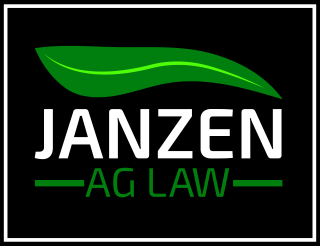FETTI Conference Review - Water, PFAS, and Climate
/I attended and presented at the FETTI (the National Forum for Environmental & Toxic Tort Issues) conference in Chicago last week. This was my first time attending the event, but won’t be my last. Three issues stood out to me: (1) agriculture is becoming a target for liability lawsuits; (2) “new” pollutants, like PFAS, are likely to impact all industries in the coming years; and (3) climate change will continue to be a driver for technology, lawsuits, and innovation.
First, 2022 marks the 50th anniversary of the Clean Water Act. The CWA led to a dramatic improvement in the health and safety of waterways across the country. Generally, the CWA prohibits “point source” discharges into Waters of the United States. Expect the focus over the next 50 years to shift to “non-point sources.” Think surface runoff instead of pipes coming out of factories. Agricultural land uses may be targeted by groups looking to make new law or curtail modern farming practices.
Second, PFAS were a big focus of the conference. The EPA recently moved to designate designate two of the most common per- and polyfluoroalkyl substances as “hazardous substances” under CERCLA. The proposal applies to perfluorooctanoic acid (PFOA) and perfluorooctanesulfonic acid (PFOS). If finalized, the rulemaking would trigger reporting of PFOA and PFOS releases, providing improved data and the option to require cleanups and recover cleanup costs to protect public health and encourage better waste management. The EPA’s proposal is part of its “PFAS Strategic Roadmap.” Many people know PFAS can be found in firefighting foam, teflon, and other common materials. These “forever chemicals” can also be found in biosolids. Historically, biosolids have been a potential source of agricultural fertilizer. This could lead to expensive problems as federal and state governments develop plans to address PFAS contamination in soil or groundwater.
Finally, at FETTI, I learned more about the Biden Administrative Order 13990 — Protecting Public Health and the Environment and Restoring Science To Tackle the Climate Crisis. This Order prohibits drilling in the Arctic, revokes the Keystone XL permit, creates green energy incentives, and aims to reduce climate pollution. This Order, combined with the Inflation Reduction Act, will likely spur solar and wind development. The Act includes residential solar tax credits and production tax credits to accelerate U.S. manufacturing of solar panels, wind turbines, and batteries. The Order and the Act demonstrate the trend toward incentivizing behavior rather than regulating it, when possible. Of course, these are federal policies. States have been enacting a patchwork of varying laws related to energy—from California’s move to ban gas-powered cars by 2035 to North Carolina’s commitment to shift to 100% carbon-free energy by 2050. State and federal regulations and incentives will definitely generate opportunities for rural landowners, farmers, and manufacturers—but could also create liability pitfalls.
My presentation focused on nitrate contamination lawsuits (cases include Cow Palace, Des Moines Water Works, and City of Corcoran). This topic fit nicely with the themes of the conference, including the CWA and agricultural as a potential target in the coming years. This event primarily was geared toward the national insurance industry but delivered lessons important to my agricultural practice. I look forward to attending again!




